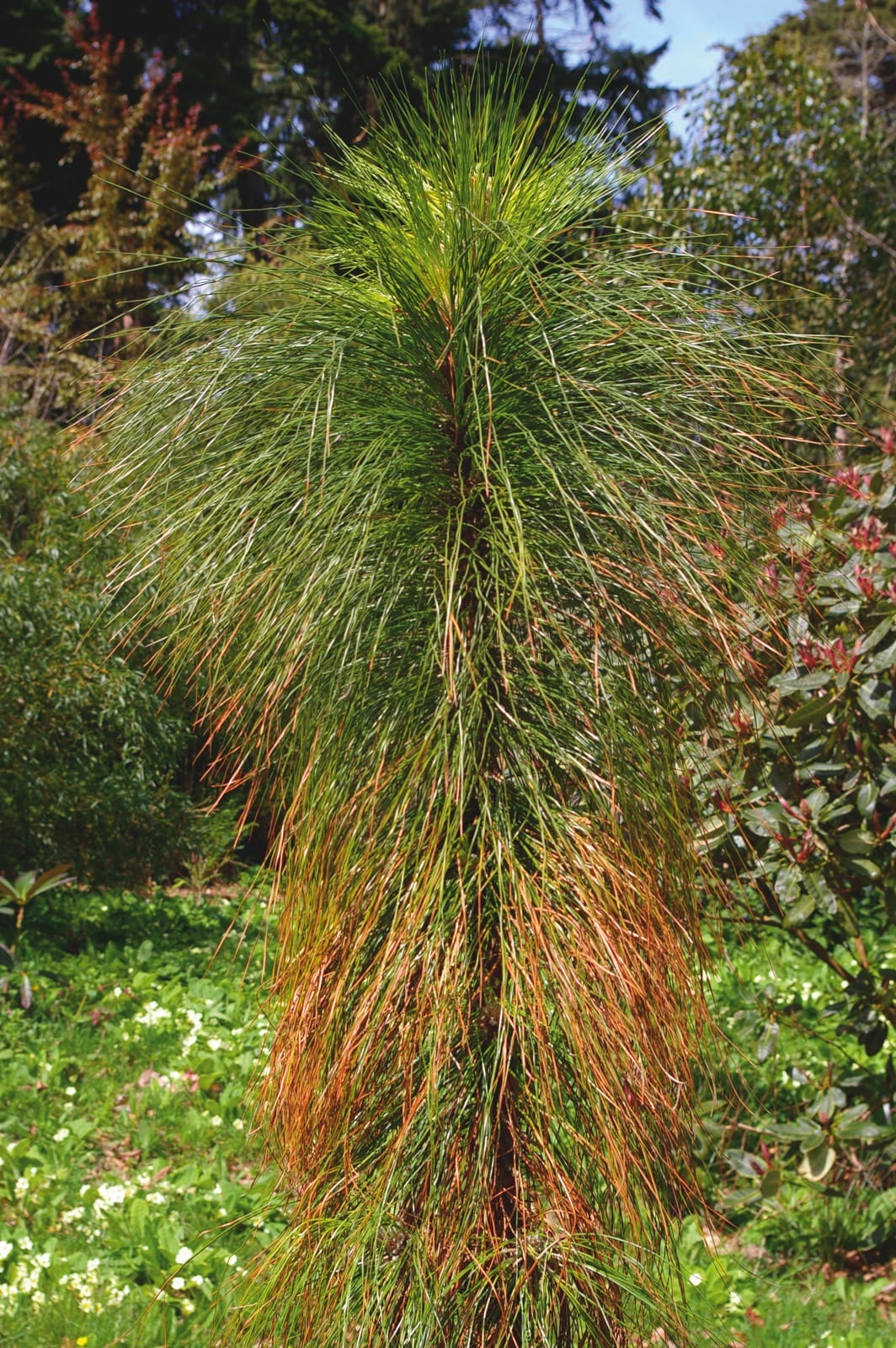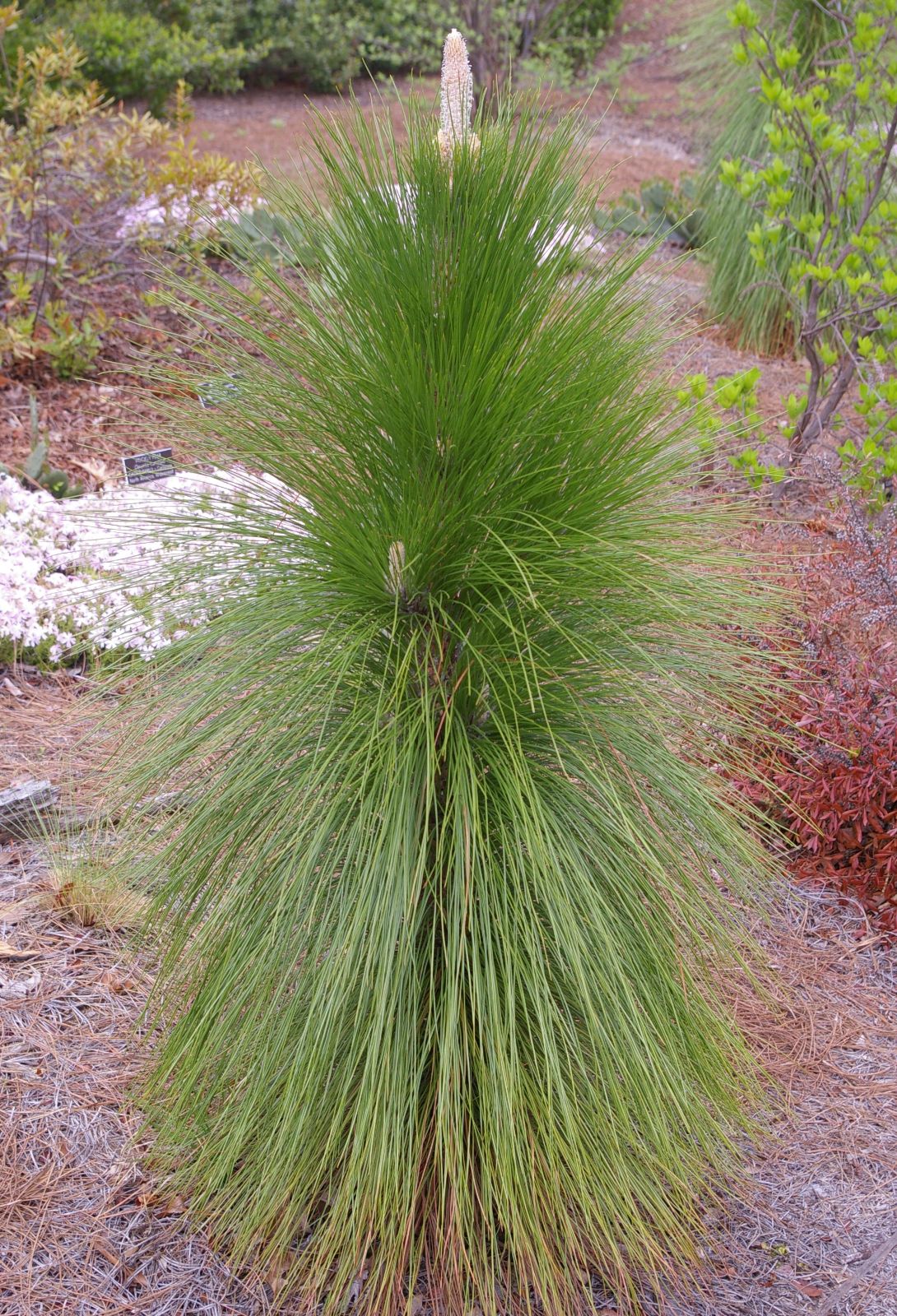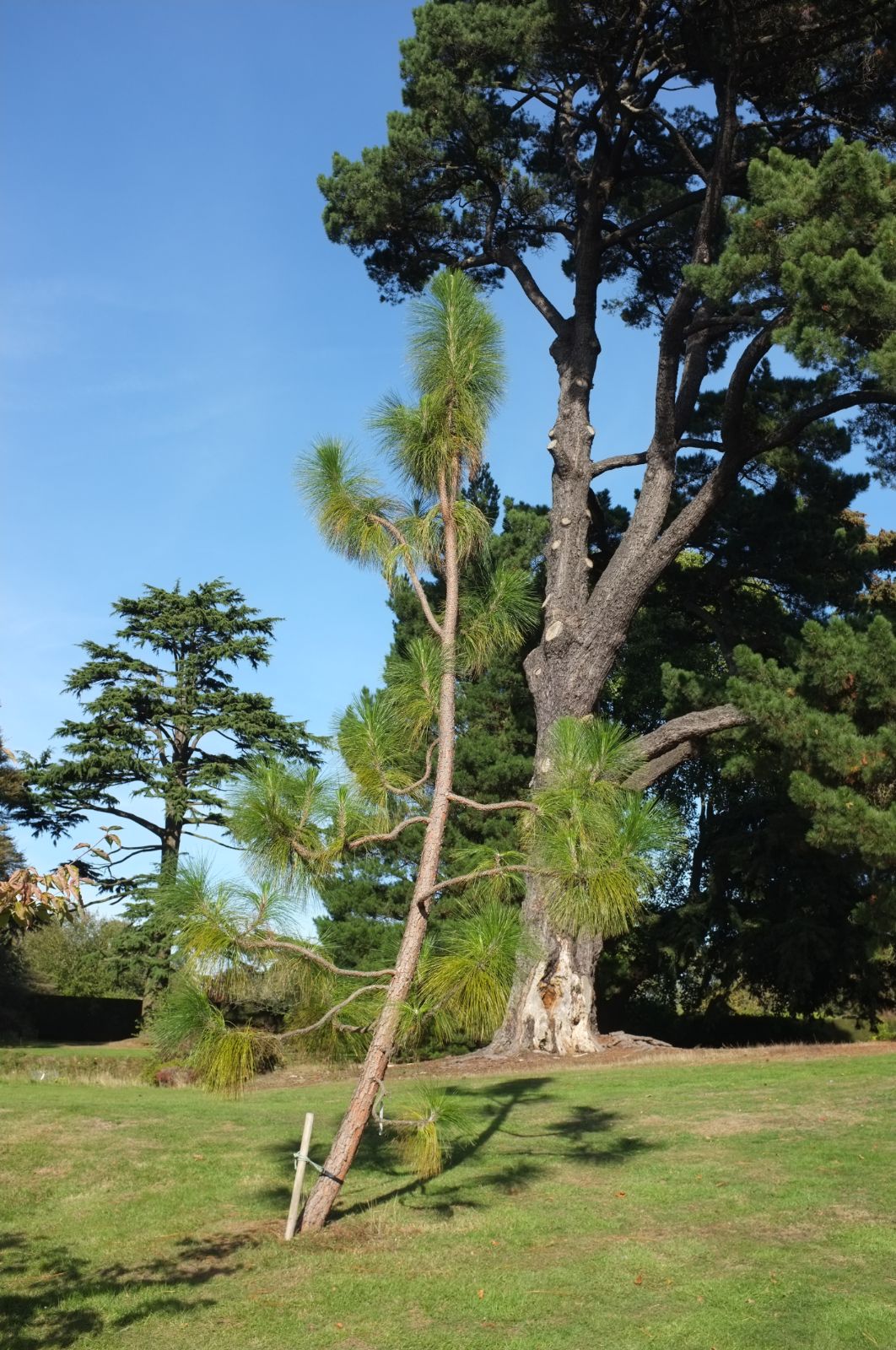Pinus palustris
Credits
Article from New Trees by John Grimshaw & Ross Bayton
Recommended citation
'Pinus palustris' from the website Trees and Shrubs Online (treesandshrubsonline.
Genus
- Pinus
- Subgen. Pinus, Sect. Trifolius
Common Names
- Longleaf Pine
Synonyms
- P. australis F. Michx.
- P. longifolia Salisb.
Other taxa in genus
- Pinus albicaulis
- Pinus arizonica
- Pinus armandii
- Pinus attenuata
- Pinus ayacahuite
- Pinus balfouriana
- Pinus banksiana
- Pinus bhutanica
- Pinus brutia
- Pinus bungeana
- Pinus canariensis
- Pinus cembra
- Pinus cembroides
- Pinus chiapensis
- Pinus contorta
- Pinus coulteri
- Pinus culminicola
- Pinus densata
- Pinus densiflora
- Pinus devoniana
- Pinus durangensis
- Pinus echinata
- Pinus edulis
- Pinus elliottii
- Pinus engelmannii
- Pinus eremitana
- Pinus flexilis
- Pinus gerardiana
- Pinus greggii
- Pinus × hakkodensis
- Pinus halepensis
- Pinus hartwegii
- Pinus heldreichii
- Pinus henryi
- Pinus × holfordiana
- Pinus hwangshanensis
- Pinus jeffreyi
- Pinus johannis
- Pinus koraiensis
- Pinus lambertiana
- Pinus leiophylla
- Pinus longaeva
- Pinus massoniana
- Pinus maximartinezii
- Pinus monophylla
- Pinus montezumae
- Pinus monticola
- Pinus morrisonicola
- Pinus mugo
- Pinus muricata
- Pinus nelsonii
- Pinus nigra
- Pinus oocarpa
- Pinus orizabensis
- Pinus parviflora
- Pinus patula
- Pinus peuce
- Pinus pinaster
- Pinus pinceana
- Pinus pinea
- Pinus ponderosa
- Pinus pseudostrobus
- Pinus pumila
- Pinus pungens
- Pinus quadrifolia
- Pinus radiata
- Pinus remota
- Pinus resinosa
- Pinus rigida
- Pinus roxburghii
- Pinus sabiniana
- Pinus serotina
- Pinus sibirica
- Pinus strobiformis
- Pinus strobus
- Pinus sylvestris
- Pinus tabuliformis
- Pinus taeda
- Pinus taiwanensis
- Pinus teocote
- Pinus thunbergii
- Pinus torreyana
- Pinus virginiana
- Pinus wallichiana
- Pinus wangii
- Pinus yunnanensis
Tree to 45 m, to 1.2 m dbh. Bark reddish brown, breaking into large, irregular plates. Crown open with spreading, usually crooked branches. Branchlets stout, to 2 cm thick, reddish brown; winter buds 3–4.5 cm long, white, scales with hairy margins. Leaves in fascicles of three (very rarely two or five), persisting for two years, bright green, flexible, triangular in cross-section; the needles of P. palustris are among the longest in the genus, 20–45 × 0.15 cm. Fascicle sheaths 2–3 cm long, base persistent. Male strobili purplish red, 4–7(–8) cm long. Female cones solitary or paired, 20–25 cm long, mature in about 18 months, then quickly shedding seeds and falling. Scales reflexed to spreading; apophysis raised, keeled; umbo triangular with broad, recurved prickle. Seeds large, 0.9–1.2 cm long; wings effective, 3–4 cm long; seedlings have a prominent ‘grass stage’ of development. Thieret 1993, Farjon 2005a. Distribution USA: Alabama, Florida, Georgia, Louisiana, Mississippi, North Carolina, South Carolina, Texas, Virginia. Habitat The warm temperate and subtropical Coastal Plain is typical for this species, though it does reach the foothills of the Appalachian Mts.; between 0 and 700 m asl. USDA Hardiness Zone 7–8. Conservation status Vulnerable. Illustration Farjon 2005a; NT613. Cross-reference K228.
Like Pinus elliottii, P. palustris is an important timber species of the southeastern United States and, again like P. elliottii, is really only suited to those conditions of great heat and humidity in summer. Beyond its native range it is not very satisfactory, even in the United States; Sternberg (2004) reports that it survives at Starhill Forest, but only as a ‘struggling botanical curiosity’. It has been introduced to Europe repeatedly since 1727 (Krüssmann 1985b) but only a handful of trees have ever developed into a significant specimen, and then ‘usually as a long, scantily branched tree of no decorative value’ (Dallimore et al. 1966). The champion recorded in the British Isles is a specimen at Glencormac, Co. Wicklow measured at 20 m (67 cm dbh) in 2000 (TROI), but the identity of this should be confirmed. Its inclusion here at all might be questioned, were it not that at the present time it is freely available in British nurseries, being sold as young plants of about 50–60 cm, still in the ‘grass stage’ of their development. They are indeed very attractive, and find a particular welcome in the gardens of those keen on interesting foliage and structural effects, but in our area their charm is unlikely to last long. Where the species is better suited, young trees beyond the grass stage are of exceptional beauty, with ‘bottlebrush’ branches of long, grass-green needles, and the potential to develop into noble timber trees if all goes well. This is the iconic species of the famous Pinehurst Golf Resort, North Carolina, the course having been carved through a forest of P. palustris in 1895 – a little sporting snippet kindly contributed by Larry Hatch (pers. comm. 2008).



